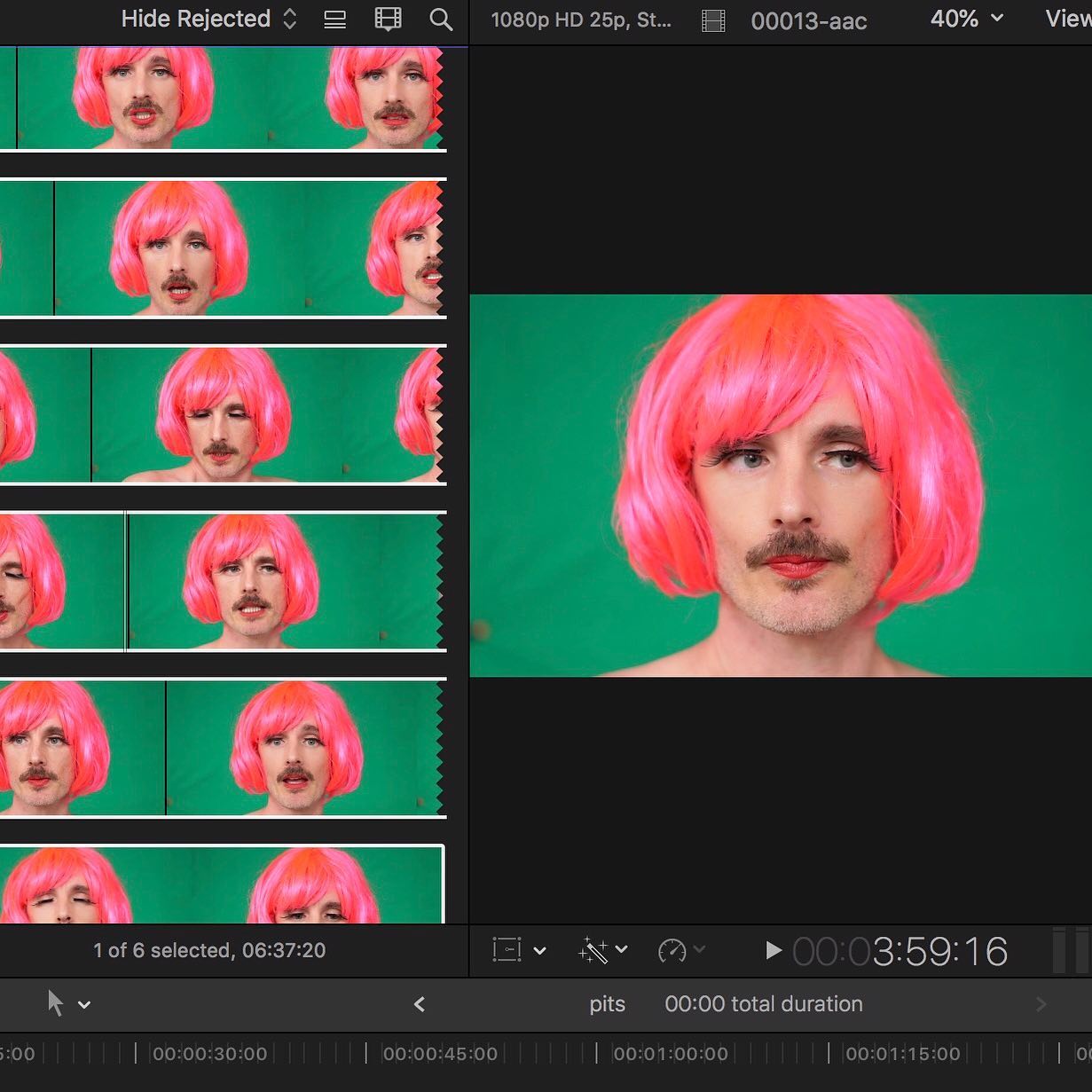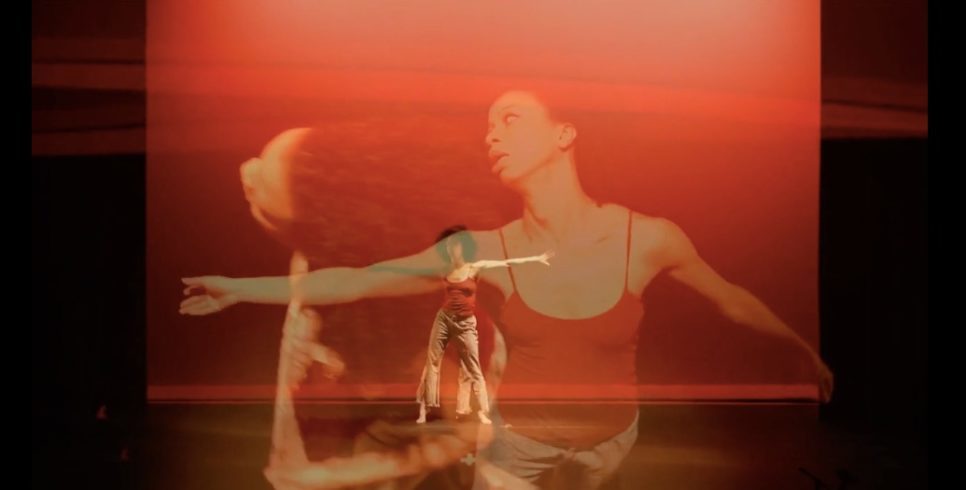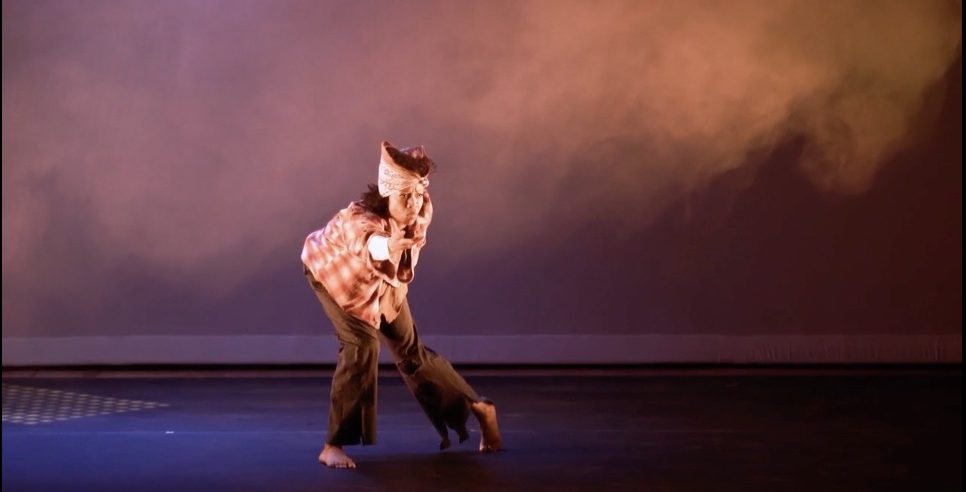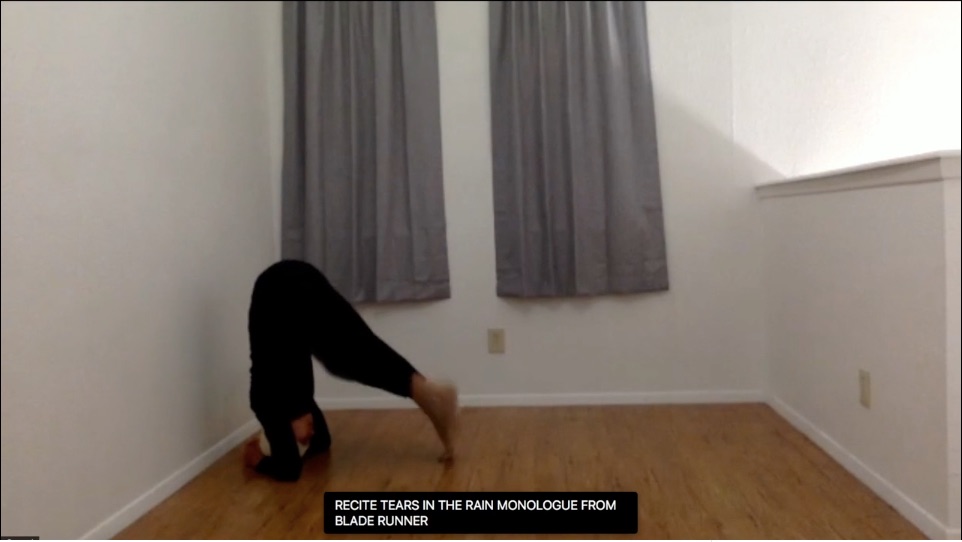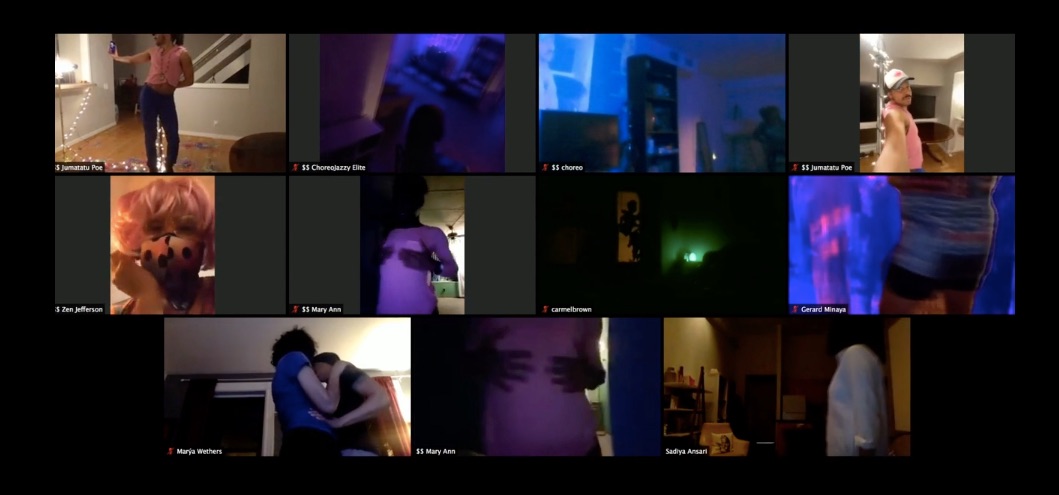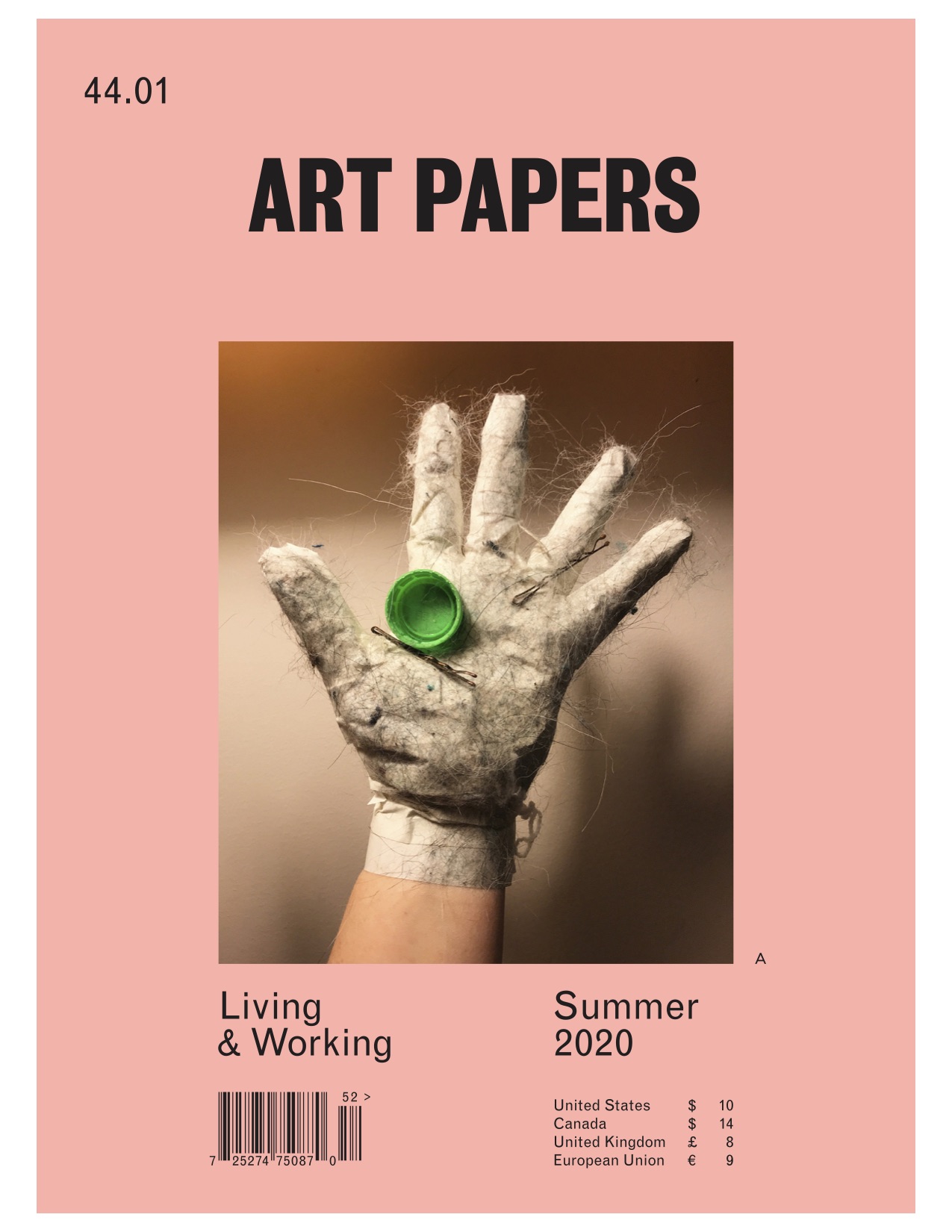Fusebox Festival 2020: “Living” Roots in the Virtual
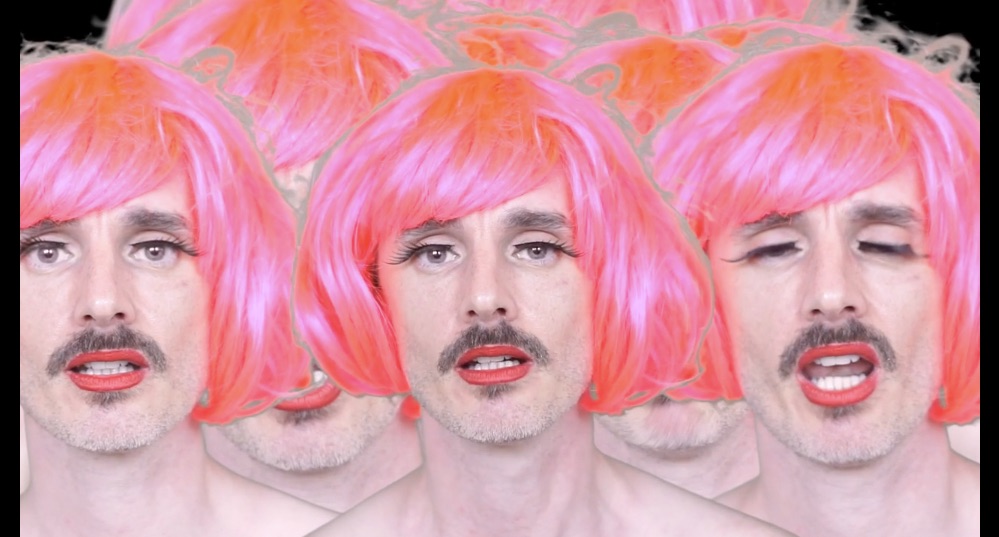
Dickie Beau, PIES IN THE SKY (screenshot), virtual performance, 2020 [courtesy of the artist and Fusebox Festival]
Share:
Texas was set to welcome hundreds of local, national, and international artists and visitors to sites across Austin for the annual Fusebox Festival, which has run for 16 years strong. About a month before the festival’s scheduled dates, however, COVID-19 made any gathering impossible. Instead, on YouTube Live, co-artistic directors Ron Berry and Anna Gallagher-Ross raised a toast to a “fresh festival” from their respective headquarters— storage rooms turned neon pink “experimental performance caves”—saluting the artists who adapted to a re-imagined virtual festival. Rather than canceling, Fusebox regrouped with little more than four weeks to plan an online-only event April 24–26. In the spirit of care and commitment, organizers offered artists the chance to collaborate on performances, workshops, studio visits, installations, late-night dance parties and DJ sets, conversations, cooking classes, “waffle chats,” and child-friendly activities. Fusebox remunerated artists for their original performances and additionally for reconceptualized experimentations online, a necessary fiscal feat during this time of cancellation and rescheduling. Organizers acknowledged the challenges, and even grief, of reconfiguring existing work, or, in some cases, presenting something entirely new that would speak to the original theme of the festival. 2020’s iteration of the festival focused on archives and how they enable the past to resonate through performances in the present.
But how, folks might rightly wonder, can a performance festival exploring the “liveness” of archives carry out such work, when their version of “live” occurs through a screen? That fickle term, live, figures in a variety of performance contexts, but TATE performance curator Catherine Wood’s definition particularly resonates: “being in the moment, a mutual presentness, even an element of physical risk.” Through its public-access television aesthetic, DIY-ingenuity, and “of the moment” experimentality, Fusebox challenged the festival structure and dispensations of liveness. A plurality of voices performed in segments ranging from 20 seconds to durational performances that spanned hours. Such a diversity and layering of live archives projected a kind of virtual polyphony of past and present. As the preface to the accompanying publication presciently described, the past is “written on our landscape, imprinted on us, by our experiences, our actions, and our memories,” orienting that polyphony toward the fundamental aspects of being alive now. The resulting affect struck me as the “living” roots of “liveness,” entangled in the everyday as much as that of the proscenium.
Dickie Beau, PIES IN THE SKY (work process screenshot), 2020 [courtesy of the artist and Fusebox Festival]
Such gestures began with evocative “shorts”—Coronasongs From a Room, which looped a looped microcosmic choir of comedian Chris Grace singing: stay the “F–U—indoors” and tune in to the festival. The work recurred with the honest caption: “created by an isolated human being to prevent from going insane.” Another temporally concise act, Dickie Beau’s PIES IN THE SKY—a series of lip-synched, prerecorded dream diaries—intoned the nocturnal absurdities many of us were subconsciously experiencing but needed to hear out loud. Scores of flying dogs barked limericks, recalling dioramas from the night before. Beau’s verbatim recollections, recited in a hot pink wig, sunglasses, and precise lipstick contour, alongside Grace’s Coronasongs, offered momentary snippets of respite in the living archival marathon. Lengthier sequences—such as Daniel Alexander Jones and Sharon Bridgforth’s conversation Impulse and Utterance, and Justin Shoulder’s studio visit with collaborators Matthew Stegh and Corin—reflected upon art-making during these uncertain times. The long and short durations brought the often-erratic festival atmosphere back to its “living” roots—those underlying the “liveness” of the stage: artists’ histories, lived experiences, collaborators, and environs.
The roots of multinodal histories were exposed in the world premiere of Gesel Mason’s prerecorded NO BOUNDARIES: The Journey to Embody and Archive the Visions of Black Choreographers, a 15-year research project featuring the choreography of Kyle Abraham, Bebe Miller, David Roussève, and Jawole Willa Jo Zollar, among others, performed in a repertoire of solos by Mason. Configured for Fusebox Festival as a performative lecture of multiple dance genealogies, the work embodied what Amma Y. Ghartey-Tagoe Kootin—a collaborator on the project—calls an expansion “of the definitions and possibilities of (black) dance and the archive.” Three other performances also reached for roots. Autumn Knight’s workshop “Eating in Costume” candidly excavated the feeling of disappointment in the age of COVID-19 through the common theater mishap of spilling food on one’s show costume. She invited participants to likewise spill on ourselves and live in that moment. That gesture melded us more materially to grief, reckoned with the racial inequalities that run throughout it, and somehow also disclosed humor.
Gesel Mason, NO BOUNDARIES (screenshot), virtual performance, 2020 [courtesy of the artist and Fusebox Festival]
Alexa Capareda’s performance Alexa…_______ begged the audience to tell her what to do, in a kind of techno-quarantine desperation. Through her acquiescence, she collaborated in readings of “How Doth the Little Crocodile” by Lewis Carroll, and movement-based interpretations of requested Tik Tok challenges and sophisticated finger dances. She paused to weep and questioned the meaning of life with a put-on monotone that was nevertheless tragically human in the midst of quarantine confinement. Finally, Ingri Fiksdal’s iteration of an outdoor performance series, Diorama, featured collaborators, draped in Fredrik Floen’s reflective costumes, who contorted themselves along the terrain of locked-down Oslo across eight filmed views. Jenny Hval and Lasse Marhaug’s soundscape of echoes, creaks, and whispers, set within that piercing Nordic light, sutured multiple perceptions to the slow movement of the collaborators’ unfolding.
Alexa Capareda, Alexa… _________ (screenshot), virtual performance, 2020 [courtesy of the artist and Fusebox Festival]
Fusebox’s “The Future of Festivals” conversation parsed the scaffoldings that aim to nurture such roots. Artistic directors and curators from GIFT, Gateshead, UK; Transform Festival, Leeds, UK; TBA of the Portland Institute for Contemporary Art, Oregon; Take Me Somewhere, Glasgow, UK; and Kyoto Experiment, Tokyo discussed the various festival ecologies that coalesce in creating multifaceted events. They included artist networks, curatorial team collaboration, production and tech ingenuity (among countless other organizational feats), and how these elements should remain as models, while pivoting within online environments. The panelists asked how to ethically approach the responsibilities of postponing, cancelling, or even overloading calendars for 2021; how to acknowledge and commission artists already working in the virtual sphere; what does “risk” mean in light of the pandemic (and now, in writing this, the policing of Black bodies), and how can online engagement provide greater accessibility while saving monetary and environmental resources. The conversation turned to how we could maintain a pace that enables critical thought and planning in the seasons ahead and, perhaps most importantly, asked whether festivals can expect audience members to take risks in such an unprecedented time.
Jermone Donte Beacham, jumatatu m. poe, LaKendrick Davis, Zen Jefferson, Queer Slow Jam: Virtual Edition (screenshot), virtual performance, 2020 [courtesy of the artists and Fusebox Festival]
As Fusebox 2020 came to a close that Sunday, jumatatu m. poe, LaKendrick Davis, Jermone “Donte” Beacham, and Zen Jefferson’s collaborative and participatory Queer Slow Jam—“slow dancing together, apart”—kept spontaneously reoccurring in my mind. Its moments seemed to stretch across days, speaking to that intangible quality that festivals evoke. The original procession planned for the streets of Austin, part of Let ’im Move You, inspired by J-Sette majorettes’ big, baton-twirling moves meant for stadiums of people, turned to slow-dance swaying in the online jam session. Hard times have tested artists before, and they’ll do so again. The sway brought to mind the groundedness of creative resolve in the midst of chaos.
***
This review originally appeared in print in ART PAPERS Summer 2020 // Living & Working.
Laurel V. McLaughlin is a curator and art historian from Philadelphia, now based in Portland, OR. Her writing has appeared in Art Practical, Performa Magazine, Title Magazine, Performance Research, Antennae: The Journal of Nature in Visual Culture, and elsewhere. McLaughlin is currently a 2020–2021 Luce/ACLS Dissertation Fellow and PhD candidate at Bryn Mawr College, writing a dissertation concerning migratory aesthetics in performance art situated in the United States, 1970s–2016.
